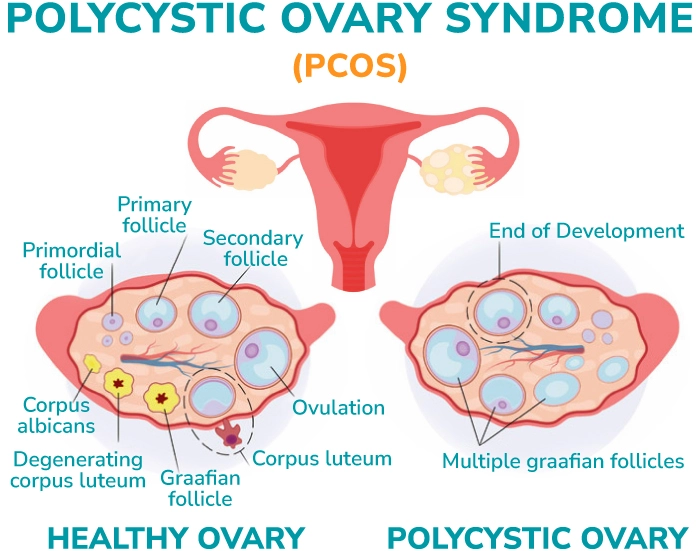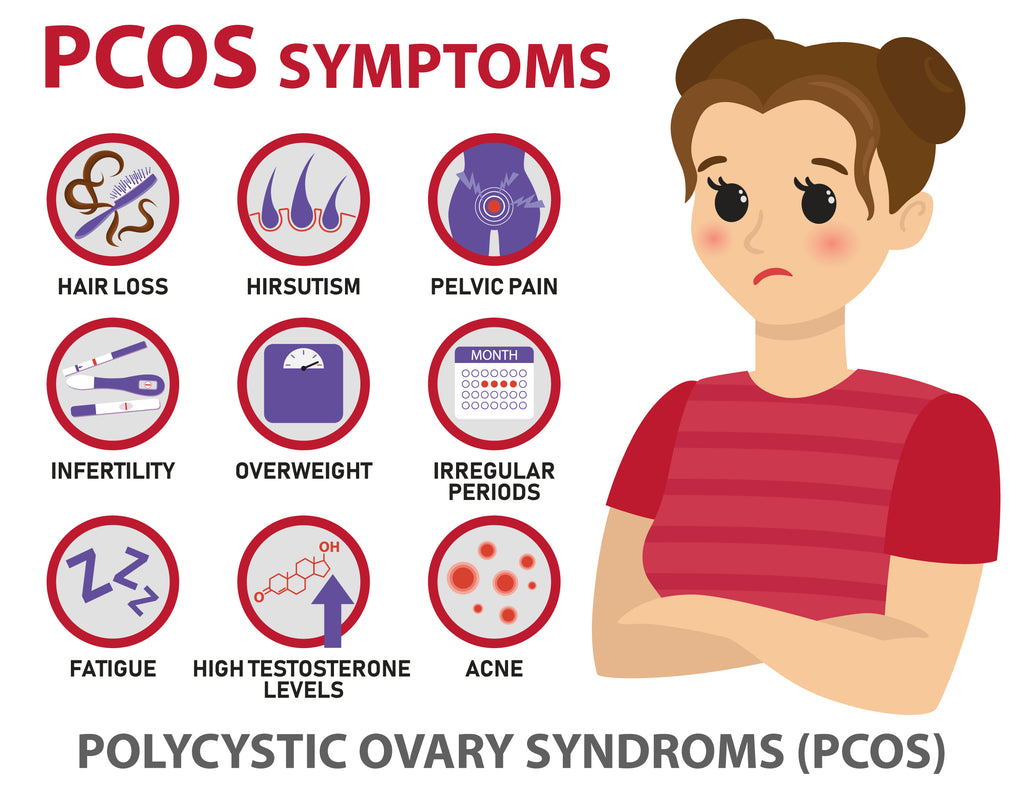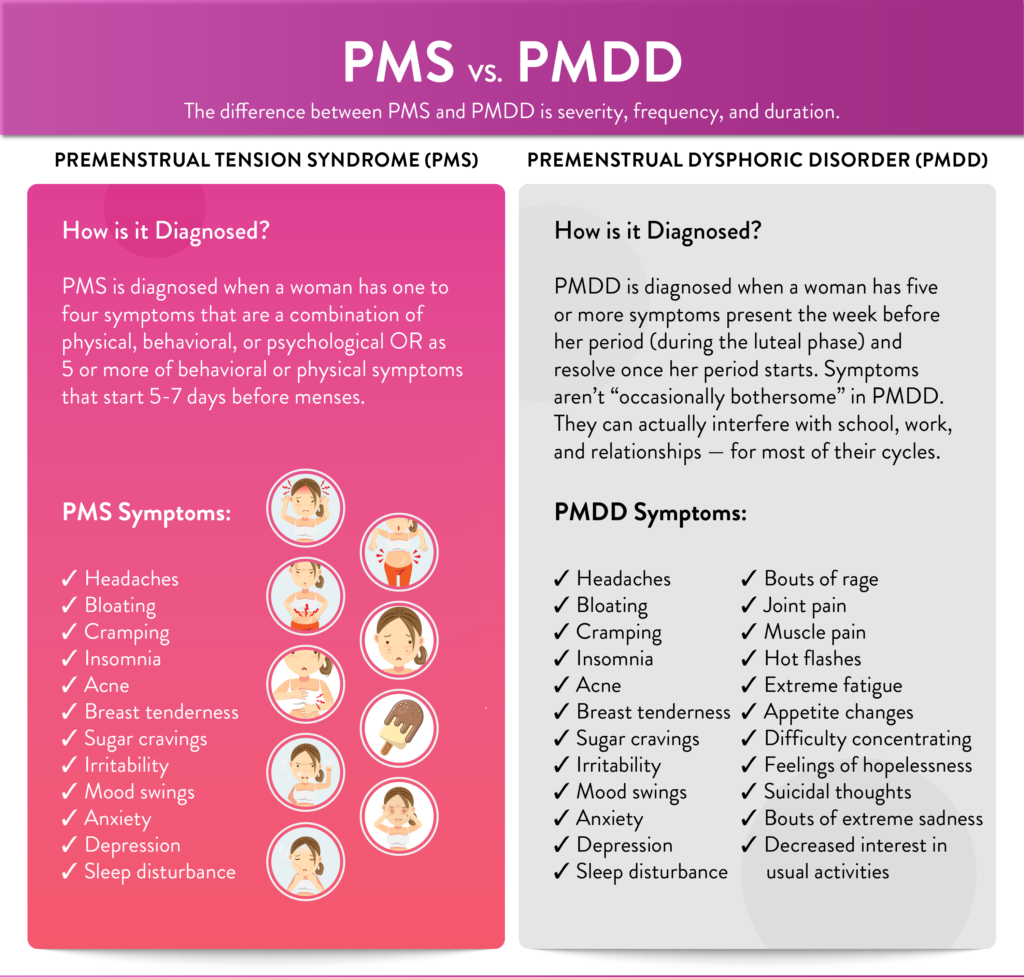Unveiling the Silent Struggle: Three Lesser-Known Conditions Impacting Women's Health
As we navigate the complexities of modern life, the solution lies not in the hallowed halls of academia or the corridors of pharmaceutical giants but in the collective voice of awareness.
Let’s dive into three such conditions that challenge women every day: Polycystic Ovary Syndrome (PCOS), Premenstrual Dysphoric Disorder (PMDD), and Menopause(a natural process)
1. Polycystic Ovary Syndrome (PCOS)
- Irregular Menstrual Cycles: Individuals with PCOS often experience infrequent, irregular, or prolonged menstrual periods. This irregularity can be due to the lack of ovulation, which prevents the shedding of the uterine lining.
- Excess Androgen Levels: Elevated levels of androgens (male hormones such as testosterone) can lead to physical signs such as hirsutism (excessive hair growth on the face and body), acne, and male-pattern baldness.
- Polycystic Ovaries: Many individuals with PCOS have enlarged ovaries containing multiple small fluid-filled sacs or follicles. These follicles may be unable to regularly release eggs, thus leading to anovulation.
- Irregular Periods
- Heavy bleeding
- Hair thinning
- Pelvic Pain
- Acne
- Weight gain(especially in the belly)
- Darkened skin (under your breasts or arms, or on your neck)
- Ovarian cysts(These sacs are actually follicles, each one containing an immature egg.)
- Mood changes(mood swings and feelings of anxiety or depression)
- Dietary Changes : Focus on a balanced diet rich in whole grains, lean proteins, healthy fats, fruits, and vegetables. Choose foods that have a low glycemic index to help manage blood sugar levels since insulin resistance is common in PCOS, increasing the risk of developing type 2 diabetes.
- Regular Exercise: Engage in regular physical activity. This can help decrease insulin resistance and thus decrease androgen levels.
- Weight management: Not all people who have PCOS are overweight, but many are and losing weight can help to get hormone levels back to normal. A combination of diet and exercise can help with this.
- Reducing Stress and Getting proper rest : These two factors are important to manage PCOS because they can disrupt hormone levels and worsen symptoms. One can use stress management techniques to help in reducing stress.
- Medication : Certain medications can help to improve symptoms but you should consult a doctor to understand what's best for you
Emotional and Behavioral Symptoms:
- Severe mood swings
- Irritability or anger
- Depressed mood or feelings of hopelessness
- Anxiety or tension
- Extreme sensitivity to rejection or criticism
- Difficulty concentrating
- Changes in sleep patterns (insomnia or excessive sleepiness)
- Changes in appetite (overeating or specific food cravings)
- Decreased interest in usual activities
Physical Symptoms:
- Breast tenderness or swelling
- Headaches
- Joint or muscle pain
- Bloating
- Weight gain
- Fatigue
- Gastrointestinal symptoms (such as nausea or diarrhea)
- Feelings of depression and anxiety could be much more severe in PMDD. One might even have suicidal thoughts.
- PMS symptoms could be uncomfortable but usually do not interfere with daily activities. PMDD Symptoms significantly impair daily activities, work, and relationships.
- PMS can often be managed with lifestyle changes and over-the-counter medications. PMDD requires a combination of lifestyle changes, prescription medications, and possibly therapy.
- Treatment depends on how mild or severe the condition is.
- Lifestyle changes like regular exercise, balanced det, sleep routine and stress management help to improve symptoms
- Medications like antidepressants and hormonal treatments help but one should approach a doctor to guide them through treatment and before starting any medication
- Regular checkups and consultations are important for treatment and management
3. Postmenopause - This stage follows menopause and continues for the rest of a woman's life. Symptoms like hot flashes may ease for many women, but health risks related to low estrogen, such as osteoporosis, can increase.
- Hot flashes: Sudden feelings of warmth, often accompanied by sweating.
- Night sweats : Hot flashes that occur during sleep, leading to excessive sweating.
- Irregular periods
- Insomnia
- Mood changes (mood swings, irritability, anxiety, depression)
- Vaginal dryness
- Breast tenderness
- Worsening of PMS
- Weight gain
- Thinning hair
- Lifestyle changes like a balanced diet, regular exercise, weight management, meditation and proper rest can help manage menopause
- Certain hormonal and non-hormonal treatments are available that one can be guided through with the help of a doctor and a proper treatment plan can be framed for the individual and varies from person to person.
By illuminating these lesser-known conditions, we empower women to reclaim agency over their health and well-being. It is through education, advocacy, and unwavering solidarity that we can dismantle the barriers to progress and forge a path toward a future where every woman's voice is heard and her health valued.
Sources:
Image credits:




Comments
Post a Comment